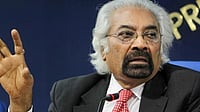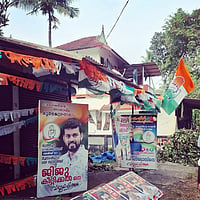Try the first story in the book. In 1978 in Komna block of Nuapada district, Kalahandi, Orissa, the government launched a major dairy development scheme for Harijans. It involved giving the beneficiaries new 'miracle' cows, which would be impregnated with Jersey semen, thereby multiplying their yields. To ensure that the local Khariar bulls did not adulterate the scheme by mating with these cows, the administration launched a massive castration drive in the region. Two years and two crore rupees later, only eight crossbred calves were produced in the entire region, and not one extra litre of milk. Meantime, the hardy Khariar bull, popular with cattle-breeders from all over Orissa, has gone extinct in the are a . Surplus milk-producers have become milk buyers. For that matter, no one still knows why a milk-surplus area was chosen for a dairy project. The project, of course, has long wound up and moved on.
Try another story. This time in Kalipur, Surguja in Madhya Pradesh, one of the poorest districts in India. A tribal woman, Subhaso, has her landholding of 9.73 acres auctioned off by the Bhumi Vikas bank in lieu of non-payment of a loan she never took. The local moneylender, Jaiswal saab, got Subhaso's husband to put his thumbprint on a document saying he would get them rations from the town. Using that, he took a loan of Rs 7,700 in her husband's name. Now, in 1986, with interest she owed the bank Rs 13,720— an amount way beyond her ken. Rajendra Pandey, a forest department employee, had machinated to push for the auction and acquired the land. Despite Subhaso's protestations, it was sold for Rs 17,500, whereas its market value was about Rs 2 lakh. Inevitably, Subhaso has gone crazed seeking justice. The irony is that two consecutive collectors and the sub-registrar's court have both assured Subhaso that no one can take away her land, and issued letters to the local tehsildar asserting the same. Of course, nothing has happened; the tehsildar has laughed her out of his room. A coalition of moneylenders, forest officials, bank staffers and a corrupt tehsildar have destroyed her. Her four-member family now ekes out a grossly underpaid living as casual labour.
But not all of Sainath's stories have this easy black and white structure, with easily identifiable villains. Most are highly readable tales of some complexity: of ludicrous official bungling, callousness and myopia, and of the distressing tragedies that want and need can create. The stories possess an unusual intensity and force, an almost parable-like quality. What distinguishes them above all is the quality of narration: humane, unsentimental, finding through the abject lives of the poorest the ostensibly larger issues that confront us.
Sainath's book can't be praised enough. Every Indian should buy a copy. But read it a story at a time, else our tender urban stomachs get hit by a bad case of gripe.


























